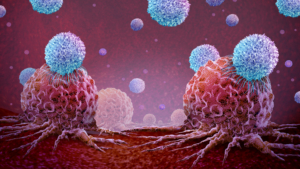
Bispecific IgG switch off SARS-CoV-2 escape variants
A bispecific antibody designed by a Swiss-Czech research team suppressed viral escape of SARS-CoV-2 variants in animals.
The team headed by Daniel Ruzek or Luca Varani from the University of Bellinzona and the Czech Academy of Sciences targeted two binding sites within the receptor binding domain (RBD) of the SARS-CoV-2 Spike (S) protein to prevent generation of viral survivors. The engineered bispecific, IgG1-like molecule (CoV-X2) based on two antibodies derived from COVID-19 convalescent donors, C121 and C135, in vitro prevented detectable S binding to Angiotensin-Converting Enzyme 2 (ACE2), the virus cellular receptor.
Furthermore, CoV-X2 neutralized SARS-CoV-2 and its variants of concern, as well as the escape mutants generated by parental monoclonals. In a novel animal model of SARS-CoV-2 infection with lung inflammation, CoV-X2 protected mice from disease suppressing the generation of viral escape variants. Thus, simultaneous targeting of non-overlapping RBD epitopes by IgG-like bispecific antibodies is feasible and effective, combining into a single molecule the advantages of antibody cocktails.
Meanwhile, because there is no funding in Europe for the costly Phase III registration trials for COVID-19 therapeutics, such as monoclonal and bispecific antibodies or similarly targeted therapeutics, European companies are moving to the United States. As part of the U.S. government agency BARDA’s billion-dollar Activ3 program to develop and preproduce promising COVID-19 antibodies, Swiss pharmaceutical company Novartis AG recently received funding for Phase III testing of its antiviral Darpin compound MP0420 (Ensovibep), which was licensed shortly before from Molecular Partners AG for an upfront $69 million. Ensovibep is a small molecule construct with antibody-like binding affinity that simultaneously binds to three sites on the receptor-binding domain (RBD) of the spike protein of SARS-CoV-2 to prevent the virus from entering cells.
According to virologists, the likelihood of escape mutants forming decreases with the number of viral targets and binding sites within a target protein. The reason for this is that the viruses are eliminated completely, rather than merely being decimated in number. This provides protection against the development of mutant viral variants.


 adobe.stock.com - Cathy
adobe.stock.com - Cathy freshidea / Adobe Stock
freshidea / Adobe Stock